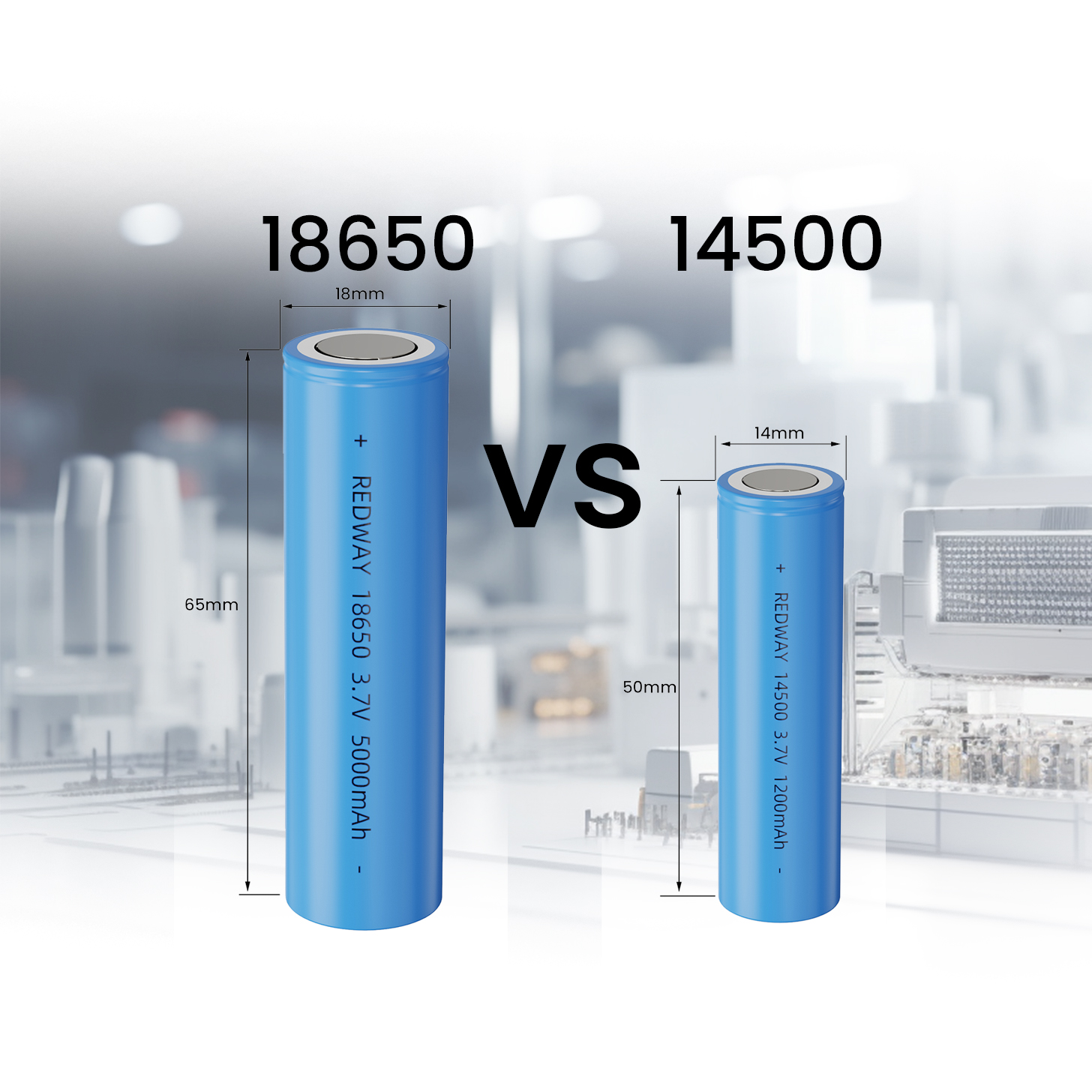When it comes to choosing the right battery for your devices, understanding the differences between various types can be overwhelming. Two popular options, the 18650 vs 14500 Battery, often come up in discussions. In this article, we'll delve into the specifics of each, comparing their features, uses, and advantages. Let's get started!

Understanding Batteries
Before we dive into the specifics of 18650 and 14500 batteries, it's essential to understand some basic battery terminology and concepts.
What Are 18650 Batteries?
The 18650 battery is a type of rechargeable lithium-ion battery. The name "18650" refers to its dimensions: 18mm in diameter and 65mm in length.
Specifications of 18650 Batteries
Common Uses for 18650 Batteries
18650 batteries are widely used in various applications, including:
What Are 14500 Batteries?
The 14500 battery is another type of rechargeable lithium-ion battery, smaller than the 18650. Its name also derives from its dimensions: 14mm in diameter and 50mm in length.
Specifications of 14500 Batteries
Common Uses for 14500 Batteries
14500 batteries are commonly used in:
Comparing 18650 and 14500 Batteries
Now, let's compare these two battery types across various parameters to understand their differences better.
Size and Dimensions
The most apparent difference is their size. The 18650 battery is larger, measuring 18mm by 65mm, while the 14500 is smaller at 14mm by 50mm. This size difference impacts where each battery can be used.
Capacity and Energy Density
18650 batteries generally have a higher capacity, ranging from 1800mAh to 3500mAh, compared to the 14500's 600mAh to 800mAh. This means 18650 batteries can store more energy and power devices for a longer period.
Voltage
Both batteries typically have the same nominal voltage of 3.6V or 3.7V, which makes them suitable for many of the same applications that require this voltage range.
Discharge Rates
18650 batteries usually have higher discharge rates, which means they can deliver more power at once compared to 14500 batteries. This makes them ideal for high-drain devices like electric vehicles and high-powered flashlights.
Lifespan and Recharge Cycles
Both 18650 and 14500 batteries have a similar lifespan, with approximately 300-500 recharge cycles. However, this can vary based on usage patterns and charging habits.
Cost Comparison
Generally, 18650 batteries are more expensive than 14500 batteries due to their higher capacity and larger size. However, the cost difference can be justified depending on the application's energy requirements.
Choosing the Right Battery for Your Needs
Selecting the right battery depends on various factors, including the device's power requirements, size constraints, and your budget.
Factors to Consider
Device Compatibility: Ensure the battery fits your device and meets its power needs.
Application Examples
For high-drain devices like electric vehicles or powerful flashlights, 18650 batteries are a better choice due to their higher capacity and discharge rates. For smaller devices like small flashlights or RC toys, 14500 batteries are sufficient and more cost-effective.
Safety Considerations
Both types of batteries should be handled with care to avoid issues like overheating or short-circuiting. Always use compatible chargers and avoid overcharging or deep discharging.
Pros and Cons of 18650 Batteries
Advantages of 18650 Batteries
Disadvantages of 18650 Batteries
Pros and Cons of 14500 Batteries
Advantages of 14500 Batteries
Disadvantages of 14500 Batteries
Conclusion
In summary, both 18650 and 14500 batteries have their unique strengths and are suitable for different applications. Understanding their specifications and differences can help you choose the right battery for your needs. Always consider the device's requirements, battery size, capacity, and cost before making a decision.
FAQs
1. Can I use a 14500 battery in a device that specifies 18650?
No, the sizes and capacities are different, and using the wrong battery can damage the device.
2. Are 18650 batteries safer than 14500 batteries?
Safety depends more on the battery quality and how they are used rather than the type. Both can be safe if used correctly.
3. How do I know if my device can use 18650 or 14500 batteries?
Check the device's manual or specifications for battery compatibility.
4. Can I charge 18650 and 14500 batteries with the same charger?
Only if the charger is designed to handle both sizes. Always check the charger's specifications.
5. What are the signs that a battery needs to be replaced?
Reduced capacity, longer charging times, and visible damage are indicators that a battery may need replacing.